How Types of Galaxies are Classified Through the Hubble Tuning Fork
Hubble’s Tuning Fork Classification
As Edwin Hubble began his grand journey of discovery in the realm of the galaxies, he quickly saw that he had to develop some way of classifying the varied types of structures he found in these gigantic star systems. Based solely on his visual observations, he concluded galaxies could be classified into three types: elliptical which he designated with the letter E, spiral which he designated with the letter S, and barred spiral. He diagrammed his classification in what is now known as the ‘Hubble tuning fork.’
This has the ellipticals on the base of the tuning fork, to the left, the barred spirals (we’ll explain those later) on the bottom branch of the tuning fork, and what Hubble called ‘lenticular’ galaxies on the upper branch. He gave them this name because their central disk is shaped like a magnifying class.
All the spirals have spiral arms, which the elliptical do not. But some have arms so tightly wound around the central core they appear almost like ellipticals.
Hubble further delineated the types of galaxies by specifying their shapes. For ellipticals, he noted three sub types:
-
E0—completely round;
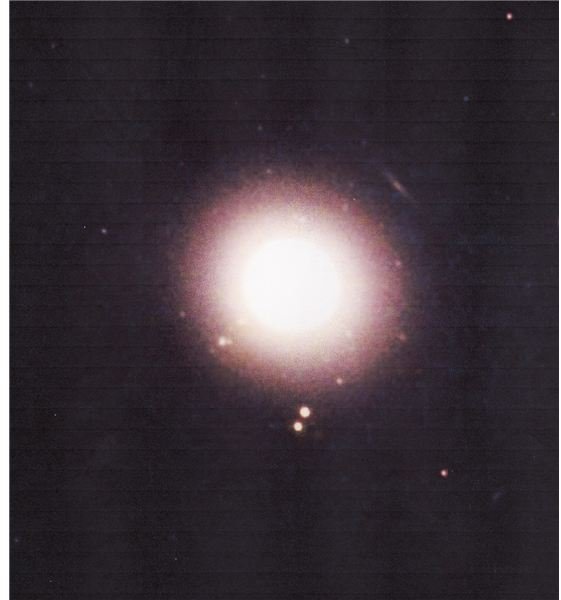
-
E5—a true ellipse;
-
E7—an extreme ellipse.
For the lenticular spirals, he designated five sub types.
-
S01—lenticular with no visible spiral arms.
-
S03—lenticular with a lot of light absorbing dust.
-
Sa—tightly wound, smooth arms.
-
Sb—more defined arms.
-
Sc—more loosely wound, clearly defined arms.
-
Sd—very loose arms; the arms are brighter than the core.

The barred spirals presented a unique question. They had a line of stars through the middle, as if they perhaps began that way, but most showed distinct spiral arms. Hubble decided they were true spirals, so designated them SBx, where x is a sub type designation. The sub types are:
-
SB01—a barred galaxy with no visible spiral arms.
-
SB03—barred with very tightly wound arms.
-
SBa—tight but distinct arms.
-
SBb—well defined loosely wound arms.
-
SBc—very loosely wound arms, and dim core.
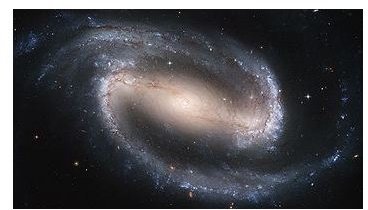
Hubble at first thought his diagram showed how galaxies evolved, but he later determined that was not the case.
As more was learned about galaxies, Hubble’s system was modified many times.
The first fine tuning was done by Walter Baade in 1944. Hubble had observed that all galaxies except irregulars had a central core and a surrounding disk of stars. Baade observed that the disks are generally blue, whereas the core, or ‘bulge,’ is usually red. This would indicate that the disk was composed of younger blue stars, while the
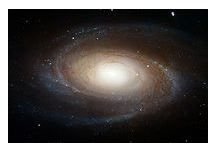
bulge was composed of older red giants. He proposed, rightly, that the stars in the core, or bulge, were older than those in the disk.
In 1959 Gerard de Vaucouleurs proposed an expanded version of Hubble’s tuning fork, to add types Hubble
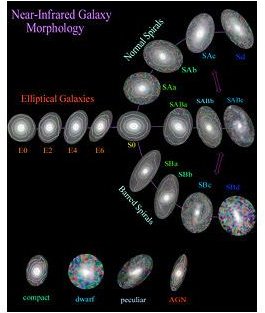
had not included because he could not see them, and to further delineate sub types.
In 1961, Allan Sandage determined that the galaxies on the right of the tuning fork were younger than those with more well defined arms as you moved to the left. He further defined the criteria for classification, based on the texture and contrast of the spiral arms. He determined that the more well defined the spiral arms, the more specific can be the classification of the type.
Sandage’s work eclipsed de Vaucouleurs’, and today it is Sandage’s version of Hubble’s classification scheme that is de rigueur.
Other astronomers offered even more complex additions, but theirs were so obtuse they have been generally ignored in favor of Sandage’s work.
But today, with space-borne telescopes and infra-red (ir) and ultraviolet (uv) imaging of galaxies, questions are arising about the traditional classification system
One major galactic discovery from space-borne telescopes that severely vibrates the tuning fork is the detection of ‘ghost’ galaxies. These are galaxies with low surface brightness (LSB). Surveys to date indicate perhaps half of all galaxies may be LSB galaxies.
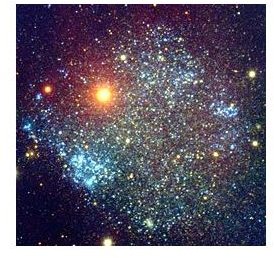
LSB galaxies are diffuse blobs with virtually no spiral structure, and so fall well outside the Hubble tuning fork.
IR images show another startling phenomenon. High red shift galaxies—that is, those most distant and younger—are smaller than galaxies nearby. Does that mean galaxies grow as they age?
That is a cosmological question we will look at in the next article.
Credits
Hubble tuning fork: Oxford University Astrophysics Dept.
Elliptical galaxy: NASA Hubble Space Telescope
Spiral galaxy: NASA Hubble Space telescope
Barred spiral: NASA Hubble Space telescope
Disk and bulge: NASA Hubble Space telescope
Vaucouleurs version: Wikipedia
LSB galaxy: NASA Hubble Space telescope
This post is part of the series: All About Galaxies
Specific details about the formation, development, evolution, and death of galaxies. The types of galaxies, how they group together, form clusters and super clusters.
